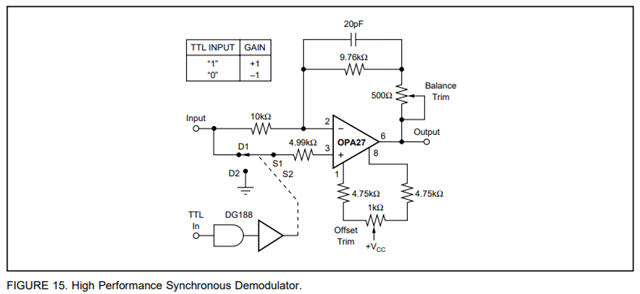To eliminate the voltage signal with a phase difference of 90 degrees produced by AC sensing in signal transmission line, we want to design a synchronous detection circuit to pick original signal. Do we have any reference circuit or guide?
-
Ask a related question
What is a related question?A related question is a question created from another question. When the related question is created, it will be automatically linked to the original question.


